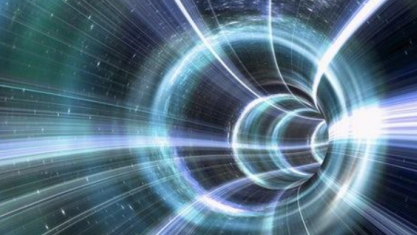

In the world of classical physics, to go from one side of a mountain to the other, you can only expend physical energy to cross the mountain. But in the world of quantum physics, there is a kind of "wall penetration", which is the quantum tunneling effect. Physicists at the University of Innsbruck in Austria have observed this effect experimentally for the first time, and it is the slowest charged particle reaction ever observed. Relevant research papers were published in the latest issue of the journal Nature.
The research team tried to trace quantum mechanical tunneling in a very simple reaction. The team chose hydrogen for their experiments. They introduced deuterium, an isotope of hydrogen, into an ion trap, allowed it to cool, and then filled the ion trap with hydrogen gas. Due to the very low temperature, negatively charged deuterium ions lack the energy to react with molecular hydrogen in the conventional way. However, on rare occasions when the two collide, a reaction does occur.
This is caused by the tunneling effect. Study lead author Robert Wilder explained that in quantum mechanics, particles have wave properties, which allows them to break through energy barriers and react. "In the experiment, we gave a possible reaction in the quantum well a time of about 15 minutes, and then determined the number of hydrogen ions formed. From their number, we could infer how often the reaction occurred."
In 2018, theoretical physicists calculated that quantum tunneling occurs only once in every 100 billion collisions in this system. This agrees very well with what scientists are now measuring. After years of research, the researchers have for the first time confirmed an accurate theoretical model of tunneling in chemical reactions.
On this basis, the researchers were able to develop simpler theoretical models of chemical reactions, which have been successfully tested. The tunneling effect can be used in scanning tunneling microscopes and flash memory, and can also be used to explain the alpha decay of atomic nuclei, and can also explain some astrochemical synthesis of molecules in interstellar dark clouds. In light of this, the team's experiments form the basis for a better understanding of many chemical reactions.
[The editor-in-chief circles]
The quantum tunneling effect is comparable to the mountain-traveling spell. It cannot happen in the classical mechanics, that is, the macroscopic world, but it is effective when using the theory of quantum mechanics to describe the microscopic particle world. In simple terms, microscopic particles can penetrate or pass through seemingly impenetrable walls. The description of this event will greatly help the development of the Nobel Prize-winning technology-scanning tunneling microscope, which will use the quantum tunneling effect to more precisely locate and observe individual atoms.